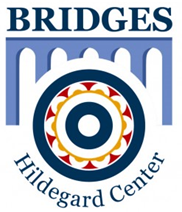Painted Story Quilt
Painted Story Quilt
(art + social studies; art + literature)
Copyrighted Lesson Plans Developed by and with Permission From Dick Blick Art Supplies
Quilt-making spans multiple centuries and many different cultures. It’s an art form that can teach basic math skills, record history, recycle cast-off materials and encourage cooperative efforts within a group...just to name a few ideas!
Artist and author Faith Ringgold is renowned for her painted story quilts. She surrounds her narrative paintings with a quilted fabric border, creating visual art that tells a story in color, texture and pattern.
In this lesson, students select a story to illustrate — a book they’ve read or a story of their own to share — then paint a scene on fabric pieces using water-soluble pastels and watercolor paint. The remaining fabric is painted with complimenting colors and patterns to make a border, and glued when dry to a piece of felt. Students are encouraged to share swatches with one another, just as fabrics have been created and shared in quiltmaking for centuries.
As an option, students define key shapes with embroidery stitches and add beads.
Grade Levels K-12
Note: instructions and materials based on a class of 25 students. Adjust as needed.
Preparation
1. View examples of quilts and storytelling in art. Emphasize Faith Ringgold’s story quilts. Recommended DVD’s: Faith Ringgold - Paints Crown Heights (72049-2001) Faith Ringgold - The Last Story Quilt (72005-2004) I Can Fly! DVD Series (72049- )
2. Cut muslin and felt in 12” x 16” pieces.
Materials
- Reeves® Watersoluble Wax Pastels, 48-color set (21951-1048); share four sets across class
- Blick® Liquid Watercolors, assorted (00369- ); share at least three colors across class
- Blick® Economy Sable Round Brushes, set of 36 (05147-0369); share one set across class
- Rectangular 6-Well Tray (03068-1006); share one between two students
- Unbleached Muslin (63104-1338) 38” wide; need approx. 12” x 16” per student
- Felt, black (63201-2007) 72” wide; need approx. 12” x 16” per student
- Elmer‘s® Tacky Glue (23883-1004); share one 4-oz bottle between two students
- Water
- Paper towels
Optional Materials:
- Potpourri Glass Beads, assorted colors (61518- ); share 2 bags across class
- Creativity Street® Embroidery Floss, pkg of 24 skeins (63100-1009); share one across class
- Embroidery needles
Process
1. Prepare by selecting subject matter and making sketches. Muslin is translucent enough that sketches may be placed beneath and traced.
2. Paint the story on a portion of the muslin, approximately 8” x 10”. Watersoluble wax pastels and watercolor were used to create the sample artwork. The wax pastel acts as a resist with the watercolor and is used to draw details in the painting. Fabric will absorb watercolor and make soft edges. Note: muslin will curl when wet, but will flatten again when glue is applied. Older students will paint shapes and pieces of the story, cut them out and assemble them together (see example artwork). Younger students will simply paint on the piece of fabric without cutting it apart.
3. Glue the story painting to the center of the piece of felt, making sure the edges are securely attached. Trim any unravelled fabric.
4. Cut the remaining pieces of fabric into 4” squares and paint the pieces that will be used in the border. Use patterns and colors that will further describe what is happening in the story. Allow to dry and cut the 4” pieces into squares or rectangles. Students may be encouraged to share some of their pieces, so they incorporate others’ painting into their own. Glue the border in place around the story painting.
Options
— Older students use an embroidery needle and floss to carefully define certain areas of the quilt with a variety of embroidery stitches.
— Beads, ribbon, lace, buttons and other materials can be incorporated into the design with glue or stitching.
— Younger students may use a fine-line marker to define certain areas of the painting or to make “faux” stitches on their quilt.
National Standards
Content Standard #3 Choosing and evaluating a range of subject matter, symbols, and ideas
K-4 Students select and use subject matter, symbols, and ideas to communicate meaning
5-8 Students use subjects, themes, and symbols that demonstrate knowledge of contexts, values, and aesthetics that communicate intended meaning in artworks
9-12 Students reflect on how artworks differ visually, spatially, temporally, and functionally, and describe how these are related to history and culture
Content Standard #4 Understanding the visual arts in relation to history and cultures
K-4 Students demonstrate how history, culture, and the visual arts can influence each other in making and studying works of art
5-8 Students know and compare the characteristics of artworks in various eras and cultures
9-12 Students differentiate among a variety of historical and cultural contexts in terms of characteristics and purposes of works of art
Content Standard #5 Reflecting upon and assessing the characteristics and merits of their work and the work of others
K-4 Students understand there are various purposes for creating works of visual art
5-8 Students compare multiple purposes for creating works of art
9-12 Students describe meanings of artworks by analyzing how specific works are created and how they relate to historical and cultural contexts
Content Standard #6 Making connections between visual arts and other disciplines
K-4 Students identify connections between the visual arts and other disciplines in the curriculum
5-8 Students describe ways in which the principles and subject matter of other disciplines taught in the school are interrelated with the visual arts
9-12 Students compare characteristics of visual arts within a particular historical period or style with ideas, issues, or themes in the humanities or sciences
